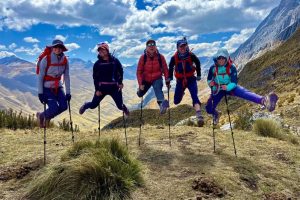Introduction
When preparing for a day hike, it’s crucial to pack the right essentials to ensure a safe and enjoyable experience in the great outdoors. Preparing for a day hike involves more than just lacing up your hiking boots and hitting the trail. It’s essential to pack the right gear and essentials to ensure a safe, comfortable, and enjoyable experience in the great outdoors. Whether you’re a beginner or an experienced hiker, knowing what to pack for a day hike can make all the difference in your adventure. This article will guide you through the essentials, what to pack for a day Hike, and personal items you should consider bringing along to maximize your hiking experience.
The Importance of Packing Right for a Day Hike

Hiking is a fantastic way to connect with nature and rejuvenate both your body and mind. However, without the proper gear and essentials, even a short day hike can turn into a challenging and potentially risky adventure. By packing right, you ensure your safety, comfort, and ability to handle any unforeseen circumstances that may arise.
Essential Gear for a Day Hike
When embarking on a day hike, having the right gear can greatly enhance your comfort, safety, and overall experience on the trail.
Backpack and Daypack
A well-fitting backpack or daypack is the foundation of your hiking gear. Look for one with adjustable straps, back ventilation, and multiple compartments for organizing your belongings. A properly fitting pack will distribute the weight evenly and prevent strain on your back and shoulders.
A backpack or daypack is an essential piece of gear for any day hike. It serves as your mobile storage unit, carrying all the necessary items for a successful and comfortable hike. Here’s a closer look at what you should consider when selecting a backpack or daypack for your adventure.
Size and Capacity: The size of your backpack depends on the duration and intensity of your day hike. For shorter hikes, a daypack with a capacity of around 20-30 liters should be sufficient to hold your essentials. If you plan to carry extra gear or have a longer hike ahead, opt for a larger backpack with a higher capacity.
Fit and Comfort: A properly fitted backpack is crucial for your comfort and overall hiking experience. Look for a backpack with adjustable shoulder straps, a padded back panel, and a waist belt. These features allow you to customize the fit, distribute the weight evenly, and minimize strain on your shoulders and back.
Navigation Tools
Navigating the trails is essential to stay on track and avoid getting lost. Carry a detailed map, a compass, or a GPS device to help you find your way.
When venturing into the great outdoors for a day hike, having the right navigation tools is crucial to ensure you stay on the right track and reach your destination safely. Here are some essential navigation tools to consider packing for your hike:
Map: Carrying a detailed map of the hiking area is essential. It provides an overview of the trails, landmarks, and points of interest along the way. Familiarize yourself with the map before starting your hike, and use it as a reference to stay on the designated path.
Compass: A compass is a valuable tool for orienting yourself and determining directions. It helps you navigate when the trail markers may be unclear or when you need to take an alternative route. Learn how to read a compass and use it in conjunction with your map to ensure you’re heading in the right direction.
First Aid Kit
Accidents can happen, even on short hikes. A well-stocked first aid kit should include bandages, adhesive tape, antiseptic wipes, pain relievers, blister treatment, and any necessary personal medications. Be sure to check the kit regularly and restock any used or expired items.
Water and Hydration

Staying hydrated during a hike is vital to maintain your energy and prevent dehydration. Carry an adequate amount of water, at least 2 liters per person, and consider a hydration bladder or water bottle with a built-in filter for convenience. Additionally, learn to identify water sources along the trail, but be cautious and treat or filter the water before consuming it.
Snacks and Meals
Pack nutritious and easy-to-carry snacks that provide sustained energy throughout the hike. Energy bars, trail mix, fresh fruit, and jerky are excellent options. If your hike lasts longer, bring lightweight meals that require minimal preparation, such as sandwiches or wraps. Don’t forget to pack utensils and storage containers.
Clothing and Layers
Dress appropriately for the weather conditions and layer your clothing for flexibility. A moisture-wicking base layer, an insulating mid-layer, and a waterproof and windproof outer layer are essential. Bring extra socks, a hat, and gloves for added warmth, and don’t forget to wear sturdy, comfortable hiking boots or shoes.
Protection from the Elements
Shield yourself from the sun’s harmful rays by wearing sunscreen with a high SPF and reapplying it regularly. Additionally, use insect repellent to ward off annoying bugs and ticks. A wide-brimmed hat and sunglasses will provide further protection against the sun, while a lightweight rain jacket will keep you dry during unexpected showers.
Personal Items and Accessories
Sunscreen and Bug Repellent
Protecting your skin from sunburn and insect bites is crucial. Apply sunscreen with a high SPF before starting your hike and reapply it frequently, especially if you’re sweating or in sunny areas. Choose an effective bug repellent to keep pesky insects at bay.
Sunglasses and Hat
Wearing sunglasses not only protects your eyes from harmful UV rays but also enhances visibility by reducing glare. Opt for polarized lenses for improved clarity. Additionally, don’t forget to wear a hat to shield your face and head from the sun’s direct heat.
Personal Identification
Carry some form of identification with you, such as a driver’s license or ID card. In case of an emergency, this information can be crucial for medical professionals or rescue teams. Ensure your identification is easily accessible.
Cash and Emergency Contact
Keep a small amount of cash on hand for emergencies or unexpected situations. Additionally, have a list of emergency contact numbers saved on your phone or written on a piece of paper. Inform a trusted person about your hiking plans and estimated return time.
Camera and Binoculars
Capture the breathtaking views and memorable moments along the hike by bringing a camera or a smartphone with a good camera. Binoculars can also enhance your experience, allowing you to observe wildlife or appreciate scenic details from a distance.
Miscellaneous Items

Map and Trail Guide
Even if you’re familiar with the trail, carrying a map or a trail guide can be useful for reference and learning more about the area. It provides valuable insights into the hike, landmarks, and points of interest along the way.
Multi-tool and Repair Kit
A multi-tool with essential tools like a knife, pliers, screwdriver, and scissors can come in handy for various situations. Additionally, carry a repair kit with items like duct tape, safety pins, and extra shoelaces for quick fixes.
Garbage Bag
Leave no trace behind by packing a lightweight garbage bag. It’s essential to preserve nature and maintain the cleanliness of the trails. Dispose of any waste properly and consider picking up any litter you may encounter.
Portable Phone Charger
To ensure your phone remains functional throughout the hike, carry a portable phone charger or a power bank. It’s helpful for emergencies or if you need to use your phone’s GPS or take pictures along the way.
FAQs
How long should my day hike be?
The duration of a day hike depends on your fitness level, trail difficulty, and personal preferences. Generally, day hikes range from a few hours to a full day. Choose a hike that matches your abilities and allows you to return before darkness falls.
Is it necessary to bring a compass on a day hike?
While many trails are well-marked, having a compass can be a valuable backup navigation tool. It provides an additional layer of security, especially if you’re hiking in unfamiliar terrain.
Can I wear jeans for a day hike?
It’s generally not recommended to wear jeans for a day hike. Denim takes a long time to dry and can become uncomfortable when wet or sweaty. Opt for moisture-wicking, quick-drying hiking pants or shorts instead.
Should I pack extra clothes for a day hike?
It’s wise to pack an extra set of clothes, particularly socks and a lightweight layer, in case you encounter unexpected weather changes or get wet. Being prepared ensures your comfort throughout the hike.
Are energy bars a good snack option for a day hike?
Energy bars are a convenient and compact snack option for day hikes. They provide a quick boost of energy and are easy to carry. However, it’s essential to read the labels and choose bars that offer a balance of nutrients and aren’t overly processed.
Conclusion
Properly packing for a day hike can significantly enhance your outdoor experience. By following this comprehensive packing guide, you’ll be prepared for what to pack for a day Hike. Remember to check the weather conditions, plan your route, and adjust your packing list accordingly. Stay safe, enjoy the beauty of nature, and have a memorable day’s hike.

